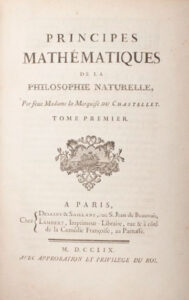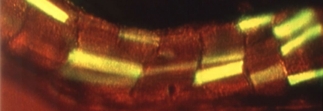
Scan of opening page for Principes Mathematiques (1759)
As the Libraries’ rare book collections grow, they become an increasingly rich teaching resource.
This year, for the first time, the Libraries allocated funds specifically for the purchase of rare materials with the twin goals of filling gaps in the collection and broadening its scope. Acquisitions made with these funds are already making an impact in the classroom.
Principes Mathématiques (1759) arrived in July. Written by mathematician/physicist Émilie du Châtelet, a woman whose accomplishments astonished Enlightenment-era France, the volume was featured in a rare books session for incoming freshmen. Students have also been examining two other recent purchases: a cuneiform tablet from 2000 BCE, and Ephraim Chambers’ groundbreaking Cyclopaedia (1728), which rounds out the Libraries’ substantial collection of encyclopedias.
These rare books will be housed in the Institute Archives and Special Collections, adding to an already varied and vibrant repository of educational items. In these collections, students are invited to examine such monuments in the history of printing as a 1493 Nuremberg Chronicle. They may compare William Barton Rogers’ personal copy of Newton’s Principia with an alchemical manuscript handwritten by Newton himself, or analyze the differences and similarities between a lavish manuscript book of hours from 1450 and Gutenberg Bible leaves from the same decade.
With ongoing financial support, MIT Libraries aims to make rare books an even more valuable teaching resource across MIT’s curriculum. On the shopping list: additional works by women in science, a parchment scroll, a title by Robert Boyle, and a printer’s woodblock, among others.
For more information about the collection, contact mithistory@mit.edu
